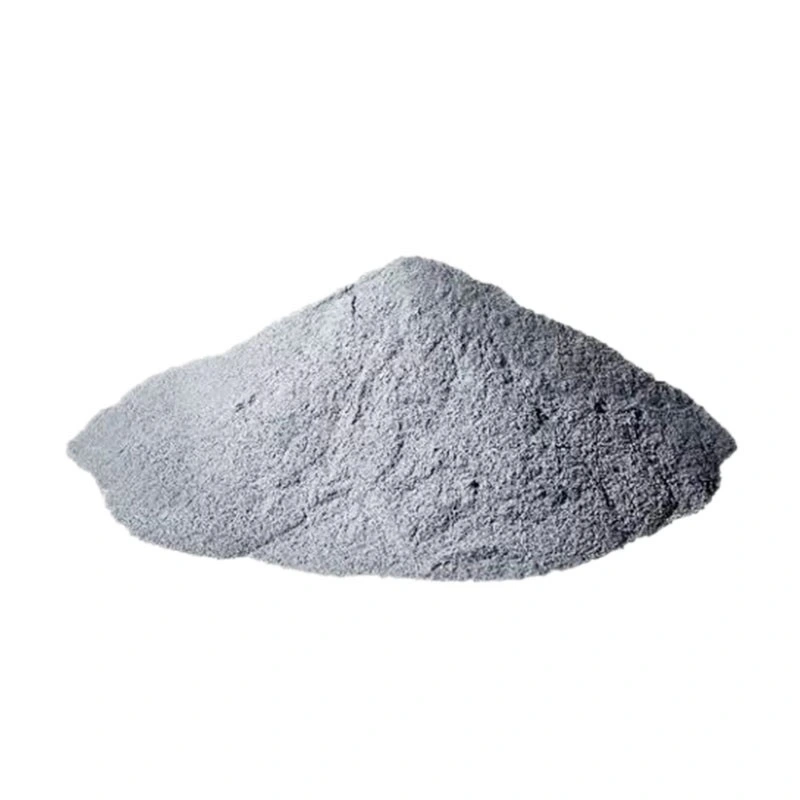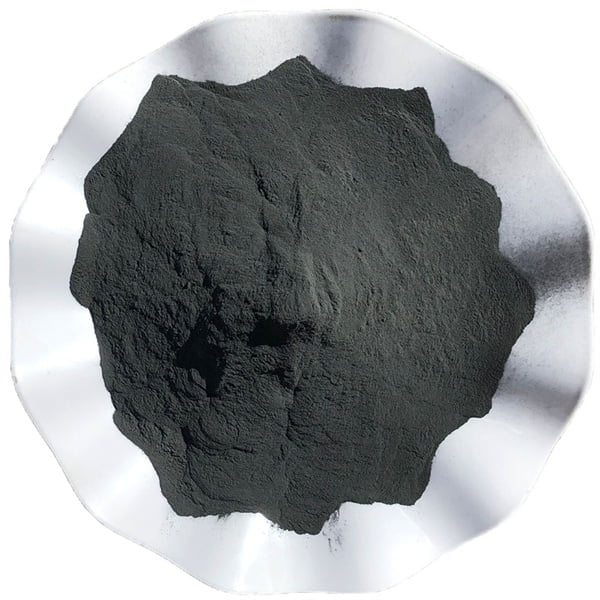Aditivní výroba elektronovým paprskem
Obsah
Aditivní výroba elektronovým paprskem (EBAM) je proces 3D tisku kovů, který využívá zdroj energie elektronového paprsku ke spojování materiálů. Tato příručka se zabývá systémy EBAM, procesy, materiály, aplikacemi, výhodami a úvahami o zavedení této technologie.
Úvod do aditivní výroby elektronovým paprskem
Aditivní výroba pomocí elektronového svazku (EBAM) je typ kovového 3D tisku, který využívá jako zdroj energie vysoce výkonný elektronový svazek, který přímo z dat CAD spojuje kovové suroviny do plně hustých dílů vrstvu po vrstvě.
Klíčové vlastnosti technologie EBAM:
- Používá zdroj energie elektronového paprsku k tavení materiálů.
- Vytváří díly přidáváním kovového prášku po vrstvách.
- Vytváří téměř síťové díly s vysokou hustotou
- Typickými materiály jsou titan, slitiny niklu, ocel.
- Větší objemy sestavení než u jiných procesů AM s kovem
- Vysoká rychlost nanášení pro rychlejší sestavení
- Průměrná přesnost dílů ±0,3 mm
- Nízké zbytkové napětí ve srovnání s laserovými procesy
- Ideální pro velké a složité kovové díly
- Snížení množství odpadu oproti subtraktivním technikám
EBAM umožňuje inovativní konstrukce, které nejsou možné při konvenční výrobě. Stejně jako u každého aditivního procesu však existují odlišné konstrukční a aplikační aspekty.
Jak Aditivní výroba elektronovým paprskem funguje
Proces EBAM se skládá z:
- nanášení a vyrovnávání tenké vrstvy kovového prášku
- Skenovací elektronový paprsek pro selektivní tavení oblastí
- Snížení stavební desky a opakované vrstvení/tavení
- Vyjmutí hotových dílů z práškového lože
- Následné zpracování podle potřeby
Pistole na elektronové paprsky generuje fokusovaný paprsek ve vakuu. Výkon paprsku, rychlost, vzor a další parametry jsou přesně řízeny tak, aby došlo k tavení materiálu.
Systémy EBAM vyžadují vakuovou komoru, manipulaci s práškem, elektronové dělo, ovládací prvky a další subsystémy.

Výrobci zařízení EBAM
Mezi přední světové dodavatele průmyslových systémů EBAM patří:
| Výrobce | Modelka | Velikost sestavení | Materiály | Cenové rozpětí |
|---|---|---|---|---|
| Přísady GE | Arcam EBM Spectra H | 1000 x 600 x 500 mm | Ti, Ni, CoCr, Al, Cu, oceli | $1.5M - $2M |
| Sciaky | EBAM 300 | 1830 x 1220 x 910 mm | Ti, Inconel, nerez | $1.5M - $3M |
| Velo3D | Safír | 680 x 380 x 380 mm | Ti, Inconel | $1M - $2M |
| Nano rozměr | DragonFly LDM | 330 x 330 x 330 mm | Měď | $0.5M - $1M |
Výběr systému závisí na výrobních potřebách, materiálech, požadavcích na přesnost a rozpočtu. Alternativou k přímému nákupu zařízení je spolupráce se zkušeným poskytovatelem služeb.
Charakteristika procesu EBAM
EBAM zahrnuje složité tepelné, mechanické a materiálové interakce. Mezi klíčové charakteristiky procesu patří:
Elektronový paprsek - Výkon, průměr paprsku, proud, rychlost skenování, zaostření
Prášek - Materiál, tvar, rozložení velikosti, tloušťka vrstvy
Vakuum - Požadované úrovně tlaku, nečistoty plynu
Teplota - Předehřev, dynamika taveniny, rychlost chlazení
Metadata - Stavební deska, systém hrabiček, stínění
Strategie skenování - Vzory taveniny, oscilace paprsků
Následné zpracování - Tepelné zpracování, HIP, obrábění, dokončovací práce
Pochopení vztahů mezi jednotlivými parametry je pro dosažení vysoké kvality dílů EBAM klíčové.
Pokyny pro navrhování EBAM
Správné postupy při navrhování dílů EBAM zahrnují:
- Návrh s ohledem na principy aditivní výroby
- Použití tenkých stěn a příhradových konstrukcí pro snížení hmotnosti
- Minimalizace nepodporovaných převisů, které vyžadují podpěry.
- Orientujte díly tak, aby nedocházelo k deformaci vlivem napětí.
- Zohlednění vlivu tepelného smrštění v prvcích
- Konstrukční geometrie usnadňující odstraňování prášku
- Navrhování povrchů spíše pro funkčnost než pro vzhled
- Přizpůsobení minimální tloušťce stěny a velikosti prvku
- Umožňuje dodatečné zpracování zásob na povrchu
- Simulace sestav a tepelných efektů u složitých dílů
- Návrh upevnění a rozhraní pro odstraňování práškového lože
Simulační a modelovací nástroje pomáhají předvídat zbytková napětí a deformace.
Materiály EBAM
Pomocí této technologie lze zpracovávat celou řadu kovů aditivní výroba elektronovým paprskem:
| Kategorie | Běžné slitiny |
|---|---|
| Titan | Ti-6Al-4V, Ti-6Al-4V ELI, komerčně čistý titan |
| Niklové superslitiny | Inconel 718, Inconel 625, Haynes 282 |
| Nerezové oceli | 304, 316, 17-4PH, 15-5PH |
| Nástrojové oceli | H13, maragingové oceli |
| Hliník | AlSi10Mg, slitina Scalmalloy |
| Drahé kovy | Zlato, platina |
| Měď | CuCrZr, Cu, slitiny mědi a niklu |
| Kobalt Chrome | CoCrMo, Stellite |
Vlastnosti materiálu do značné míry závisí na parametrech procesu EBAM a následné úpravě.
Klíčové aplikace EBAM
EBAM umožňuje zvyšovat výkonnost v různých odvětvích:
| Průmysl | Typické aplikace EBAM |
|---|---|
| Aerospace | Letecké konstrukce, turbíny, odpalovací zařízení |
| Výroba elektřiny | Součásti cesty horkých plynů, pouzdra |
| Ropa a plyn | Ventily, čerpadla, kompresory, nářadí |
| Automobilový průmysl | Odlehčovací díly, výměníky tepla |
| Lékařský | Ortopedické implantáty, chirurgické nástroje |
| Námořní | Oběžné kolo, vrtule, složité odlitky |
| Chemické | Výměníky tepla, míchadla, tlakové nádoby |
Mezi výhody oproti konvenční výrobě patří:
- Snížení množství odpadu díky poměru nákupu a letu 1:1
- Kratší doba realizace díky digitálnímu procesu
- Kombinované sestavy do jednotlivých dílů
- Přizpůsobené geometrie nevhodné pro obrábění
- Vyšší výkon složitých struktur
- Škálovatelné výrobní objemy po získání kvalifikace
EBAM vytváří příležitosti pro návrhy výrobků nové generace, které nelze realizovat jinými prostředky.

Výhody a nevýhody systému EBAM
výhody:
- Velké složité kovové díly z jednoho kusu
- Pevné a lehké komponenty z mřížové konstrukce
- Odpadá potřeba drahých lisovacích forem nebo nástrojů.
- Menší odpad materiálu ve srovnání se subtraktivními technikami
- Relativně rychlá rychlost vytváření ve srovnání s jinými procesy AM
- Nákladově efektivní při středních objemech 100-10 000 kusů
- Konzistentní metalurgie z rychlého tuhnutí
- Kombinuje sestavy do jednotlivých dílů
- Výroba na vyžádání a přizpůsobitelné designy
- Volnost geometrie nad rámec omezení při obrábění
Omezení:
- Vyšší náklady na zařízení než u polymerního 3D tisku
- Omezeno na materiály kompatibilní s vakuem
- nižší přesnost a kvalita povrchu než při obrábění
- K dosažení vlastností je často nutné následné zpracování
- Výroba práškového šrotu vyžadujícího recyklaci
- Potřebný vývoj a zkoušky procesu
- Úvahy o zařízeních s vysokou potřebou energie
- Tepelné namáhání může způsobit deformaci dílu.
- Omezení týkající se převisů a minimálních prvků
- Velikostní omezení vyplývající z obálky stavební komory
Pokud EBAM vyhovuje požadavkům aplikace, umožňuje vylepšení výrobků s vysokou hodnotou.
Implementace technologie EBAM
Klíčová hlediska při zavádění systému EBAM zahrnují:
- Identifikace aplikací, u kterých jsou možnosti EBAM výhodou
- Rozpočtování významných kapitálových investic do systému EBAM
- Vývoj přísných kvalifikačních protokolů a standardů
- Porozumění regulačním požadavkům pro koncové aplikace
- najímání pracovníků s odbornými znalostmi v oblasti práškových lůžek nebo partnerství s poskytovateli služeb
- Poskytnutí času a zdrojů na zkoušky a optimalizace procesů.
- Zavedení postupů manipulace s práškem a větrání
- Zajištění vhodné infrastruktury a energetických kapacit
- Rozpočtování sekundárního zpracování, jako je tepelné zpracování
- Provádění mechanických zkoušek k ověření vlastností
Aplikace, které jsou nejvhodnější pro počáteční zkoušky, jsou méně kritické a méně rizikové.
Úspora nákladů díky systému EBAM
Obchodní důvody pro EBAM závisí na:
- Vysoké náklady na vybavení kolem $1 milionu až $3 milionů.
- Pracovní síla pro vývoj a výrobu
- Náklady na kovové práškové suroviny
- Sekundární dokončovací operace
- Zařízení, infrastruktura pro manipulaci s práškem
- Snížení množství odpadu v porovnání se subtraktivními procesy
- Konsolidace podsestav do jednotlivých dílů
- Kratší lhůty pro vývoj než u konvenčních technik
- hospodárnost při objemech kolem 100-10 000 dílů
- Nejvyšší úspory u složitých geometrií s přidanou hodnotou
Výrobci musí vyšší náklady na vybavení AM vyvážit výrobními přínosy.
EBAM ve srovnání s jinými procesy
| Proces | Srovnání s EBAM |
|---|---|
| CNC obrábění | EBAM umožňuje obrábění složitých geometrií, které nelze opracovat subtraktivním procesem. Nevyžaduje žádné tvrdé nástroje. |
| Vstřikování kovů | EBAM eliminuje vysoké náklady na nástroje. Lepší vlastnosti materiálu než MIM. |
| Tlakové lití | EBAM má nižší náklady na nástroje. Žádná velikostní omezení. Lze dosáhnout velmi složitých geometrií. |
| Laminace plechů | EBAM vytváří plně hustý izotropní materiál oproti vrstveným kompozitům. |
| Tryskání pojiva | EBAM poskytuje plně husté finální díly v porovnání se zelenými díly tryskanými porézním pojivem. |
| SLM | SLM má jemnější rozlišení, zatímco EBAM má vyšší rychlost vytváření. Obě metody vytvářejí husté kovové díly. |
Každý proces nabízí specifické výhody v závislosti na aplikaci, velikosti dávky, potřebě přesnosti a požadavcích na výkon.
Výhled do budoucna pro EBAM
Budoucnost je jasná, pokud jde o širší zavádění EBAM, a to díky:
- Širší sortiment slitin pro výrobu
- Větší konstrukční obálky umožňující výrobu větších dílů
- Rychlejší rychlost sestavování pro zvýšení propustnosti
- Lepší povrchová úprava a přesnost rozměrů
- Klesající náklady s rozvojem technologie
- Další automatizace předběžného a následného zpracování
- Hybridní systémy integrující obrábění
- Pokročilé systémy pro monitorování procesu
- Kvalifikace pro náročná průmyslová odvětví, jako je letectví a kosmonautika.
- Optimalizace návrhu s využitím možností EBAM
S rozvojem této technologie bude EBAM transformovat výrobu v nejrůznějších odvětvích.
FAQ
Jaké materiály se používají v systému EBAM?
Lze zpracovávat titan, slitiny niklu, nástrojové oceli, nerezové oceli, slitiny hliníku a drahé kovy.
Jaká je přesnost a povrchová úprava dílů EBAM?
Typická je rozměrová přesnost ±0,3 mm s drsností povrchu kolem 25-125 μm Ra.
Jaké následné zpracování se používá pro díly EBAM?
Lze použít tepelné zpracování, HIP a obrábění. Běžně se používá také plazmové stříkání.
Jak velké díly dokáže EBAM vyrobit?
Běžné stavební objemy se pohybují od 500 x 500 x 500 mm až po 2 x 1 x 1 m u velkých systémů.
Jaké jsou výhody oproti subtraktivním metodám?
EBAM vytváří díly téměř čistého tvaru s menším množstvím odpadu a konsoliduje sestavy do jednotlivých komplexních součástí.
Jaká odvětví používají systém EBAM?
Letecký a kosmický průmysl, energetika, automobilový průmysl, ropný a plynárenský průmysl a zdravotnictví jsou prvními uživateli EBAM.
Jaké odborné znalosti jsou zapotřebí k obsluze zařízení EBAM?
Jsou zapotřebí kvalifikovaní technici se zkušenostmi s procesy v práškovém loži, metalurgií a následným zpracováním.
Jaká bezpečnostní opatření jsou nutná?
Zásadní význam mají ventilace, monitorovací zařízení, ochranné prostředky pro personál a bezpečná manipulace s práškem.
Jaké jsou náklady ve srovnání s běžnou výrobou?
EBAM se stává nákladově efektivní při středním objemu výroby 100-10 000 kusů u složitých konstrukcí.
Můžete stručně vysvětlit proces EBAM?
EBAM nanáší kovový prášek ve vrstvách, které elektronový paprsek selektivně taví vrstvu po vrstvě na základě dat CAD a vytváří tak součást.
Sdílet na
MET3DP Technology Co., LTD je předním poskytovatelem řešení aditivní výroby se sídlem v Qingdao v Číně. Naše společnost se specializuje na zařízení pro 3D tisk a vysoce výkonné kovové prášky pro průmyslové aplikace.
Dotaz k získání nejlepší ceny a přizpůsobeného řešení pro vaše podnikání!
Související články

Vysoce výkonné segmenty lopatek trysek: Revoluce v účinnosti turbín díky 3D tisku z kovu
Přečtěte si více "O Met3DP
Nedávná aktualizace
Náš produkt
KONTAKTUJTE NÁS
Nějaké otázky? Pošlete nám zprávu hned teď! Po obdržení vaší zprávy obsloužíme vaši žádost s celým týmem.

Kovové prášky pro 3D tisk a aditivní výrobu
SPOLEČNOST
PRODUKT
kontaktní informace
- Město Qingdao, Shandong, Čína
- [email protected]
- [email protected]
- +86 19116340731








